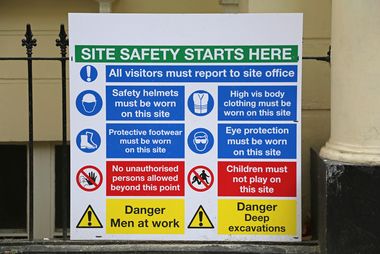Employers are legally required to provide employees with federal and state labor law posters, which inform employees of their rights in the workplace. Certain posters must also be made available to job applicants. Employers must place the posters in a conspicuous area of the worksite or make them digitally accessible to remote employees.
In most cases, you are only required to display an English-language poster. However, data from the U.S. Census Bureau shows that the U.S. population is becoming more racially and ethnically diverse. Spanish is the second most common language in the U.S., preceded by English. So it’s not surprising that some laws require employers to display posters in Spanish or other languages as well as English.
Language requirements for federal posters
Federal workplace posters include:
- Fair Labor Standards Act (FLSA) Minimum Wage.
- Job Safety and Health: It’s the Law! (OSHA).
- Employee Rights Under the Family and Medical Leave Act (FMLA).
- Equal Employment Opportunity Is the Law (EEOC).
- Employee Polygraph Protection Act (EPPA).
- Your Rights Under the Uniformed Services Employment and Reemployment Rights Act (USERRA).
- Migrant and Seasonal Agricultural Worker Protection Act (MSPA).
- E-Verify Participation.
- E-Verify Right to Work.
To ensure compliance, you’ll need to determine which posters you’re required to display and any language requirements. Your payroll provider is likely a good source of information on which posters you need to display.
In general, the U.S. Department of Labor (DOL) says their “regulations do not require posting of notices in Spanish or other languages” except in limited cases. These limited cases include:
- FMLA Poster. Per the DOL, “Where an employer’s workforce includes a significant portion of workers who are not literate in English, the employer shall be responsible for providing the notice in a language in which the employees are literate.”
- Migrant and Seasonal Agricultural Worker Protection Act (MSPA) Poster. The DOL says this poster must be delivered “in Spanish or other language common to migrant or seasonal agricultural workers who are not fluent or literate in English.”
In addition to English and Spanish, companies may want to consider displaying posters in such languages as Chinese, Thai, Russian, Vietnamese, Hmong and Korean, depending on their particular workforce. If one or more of your employees is a native speaker of one of those languages, consider ordering appropriate posters so all your employees have equal access to information.
State posters: language requirements
State poster requirements vary by jurisdiction. They may explain laws about minimum wage, overtime, child labor, work hours, paid sick leave, wage payment, drug testing, new hire reporting, smoking, immigration, discrimination and other state-mandated aspects of employment.
Many states — including California, Arizona, New York, Tennessee, Illinois and Connecticut — require employers to display posters in Spanish if a certain percentage of their employees speak English as a second language. In some states, employers must display posters in Spanish even if none of their employees speak Spanish. In addition, some local governments have poster laws, which may include language requirements.
A good rule of thumb is to display applicable posters in languages that all your employees can understand immediately. And be sure to check with your payroll provider to make sure you’re up to date with the latest regulations.